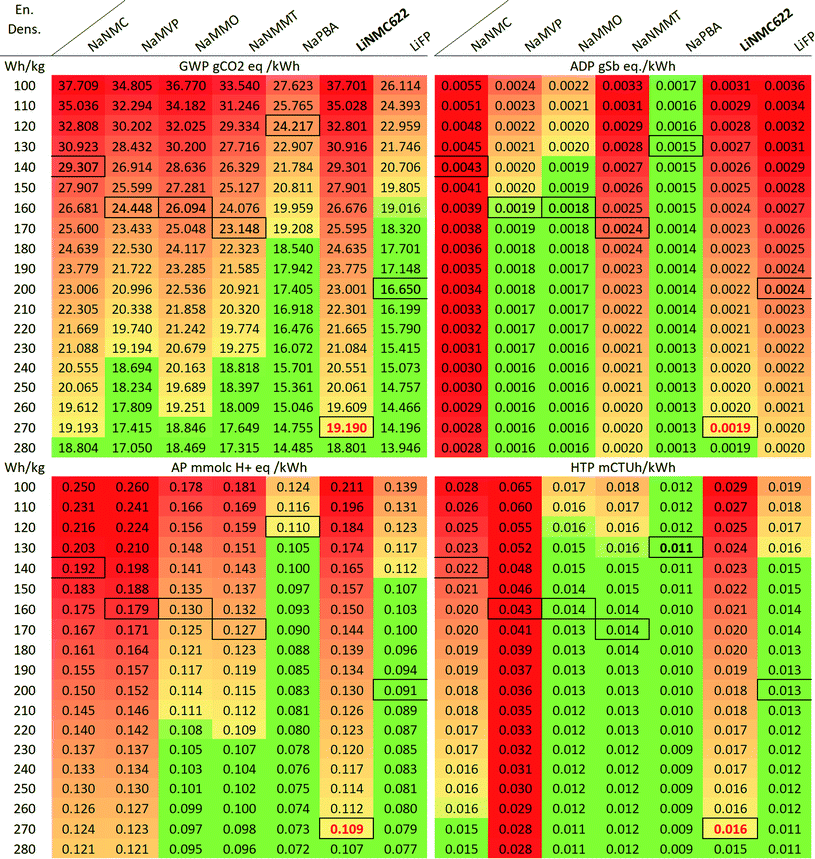 Open Access Article
Open Access ArticleCreative Commons Attribution 3.0 Unported Licence
Correction: On the environmental competitiveness of sodium-ion batteries under a full life cycle perspective – a cell-chemistry specific modelling approach
Jens F.
Peters
 *ab,
Manuel
Baumann
*ab,
Manuel
Baumann
 c,
Joachim R.
Binder
d and
Marcel
Weil
c,
Joachim R.
Binder
d and
Marcel
Weil
 ce
ce
aUniversity of Alcalá (UAH), Department of Economics, Alcalá de Henares, Madrid, Spain. E-mail: jens.peters@uah.es
bIMDEA Energy, Systems Analysis Unit, Móstoles, Madrid, Spain
cInstitute for Technology Assessment and System Analysis (ITAS), Karlsruhe Institute of Technology (KIT), Germany
dInstitute for Applied Materials (IAM-ESS), Karlsruhe Institute of Technology (KIT), Germany
eHelmholtz Institute Ulm for Electrochemical Energy Storage (HIU), Ulm, Germany
First published on 15th December 2021
Abstract
Correction for ‘On the environmental competitiveness of sodium-ion batteries under a full life cycle perspective – a cell-chemistry specific modelling approach’ by Jens F. Peters et al., Sustainable Energy Fuels, 2021, 5, 6414–6429, DOI: 10.1039/D1SE01292D.
Fig. 4 was incorrect in the original submission as it did not show results over the whole life cycle, but only manufacturing impacts. The corrected Fig. 4 should appear as follows:
The Royal Society of Chemistry apologises for these errors and any consequent inconvenience to authors and readers.
| This journal is © The Royal Society of Chemistry 2022 |

